MacBook Pro 14-inch vs MacBook Pro 16-inch: Which new MacBook should you buy?
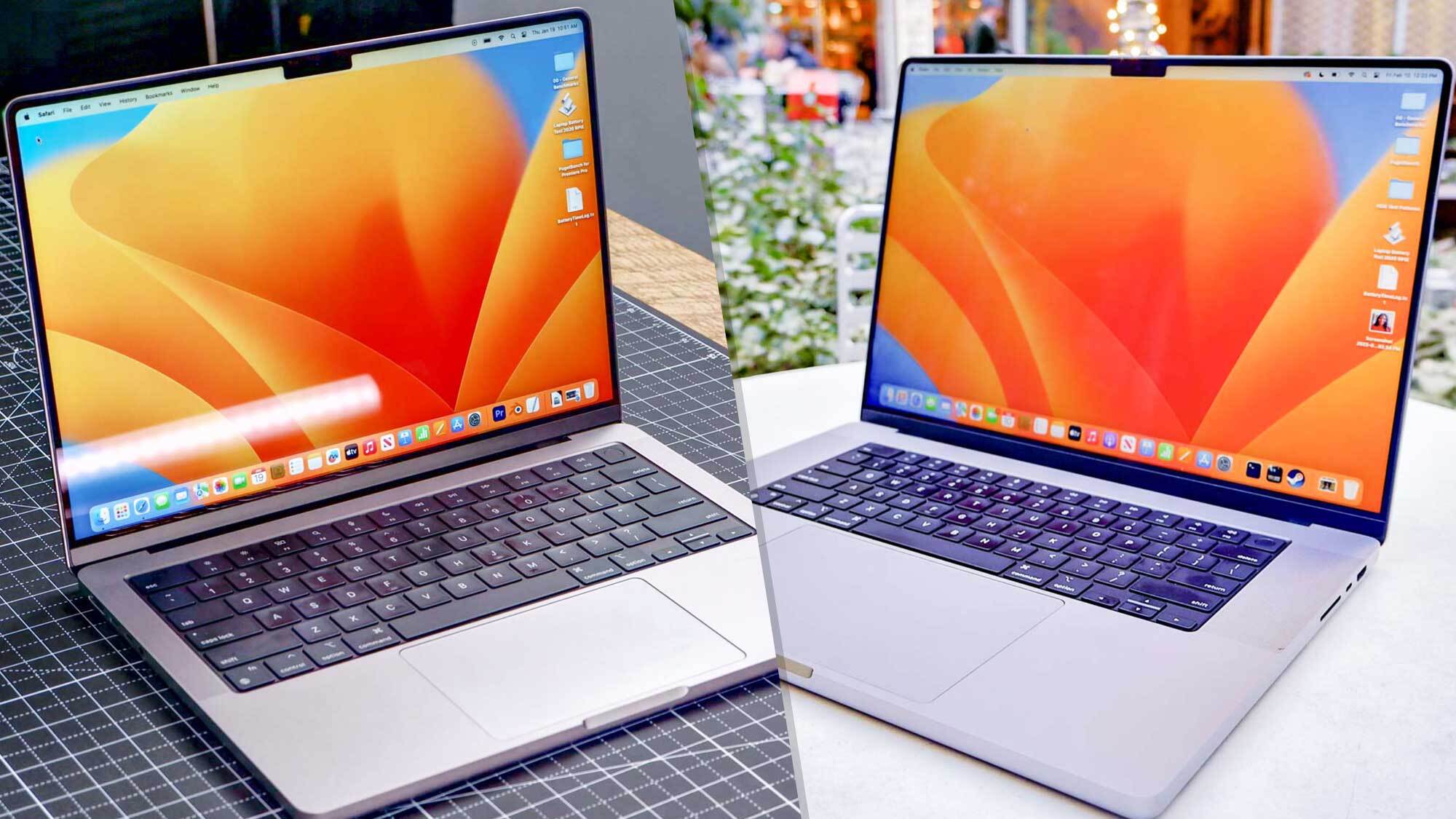
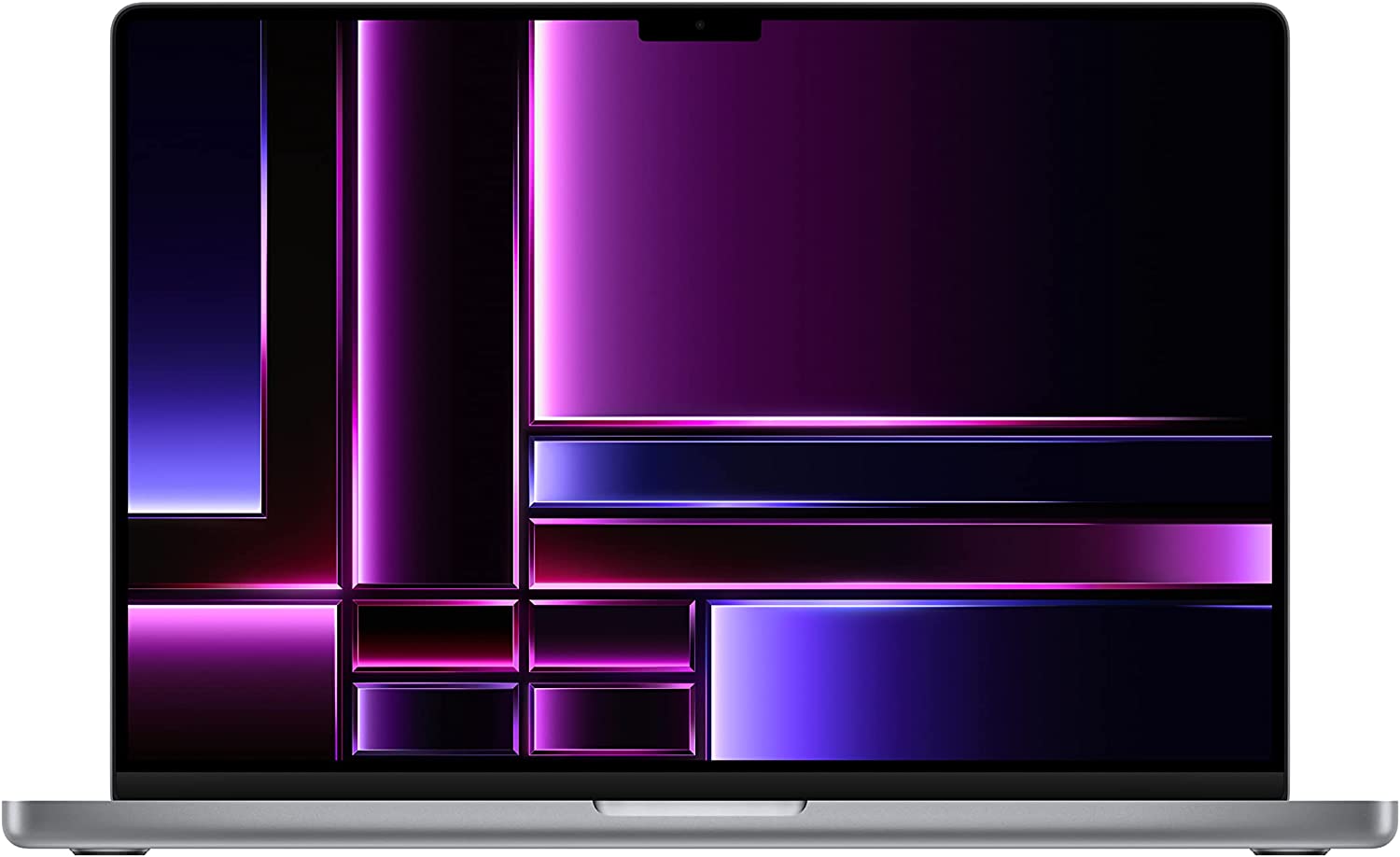
The new MacBook Pro 14-inch 2023 raises the bar for laptop performance, with the M2 Pro chip delivering incredible speed in our testing. Yes, it's pricey, but the new MacBook Pro cannot be beat.
Pros
- Blistering performance
- Vibrant mini-LED display
- Superb battery life
- Good port selection includes HDMI and SD Card
Cons
- Expensive
- Notch is distracting
- No Face ID support
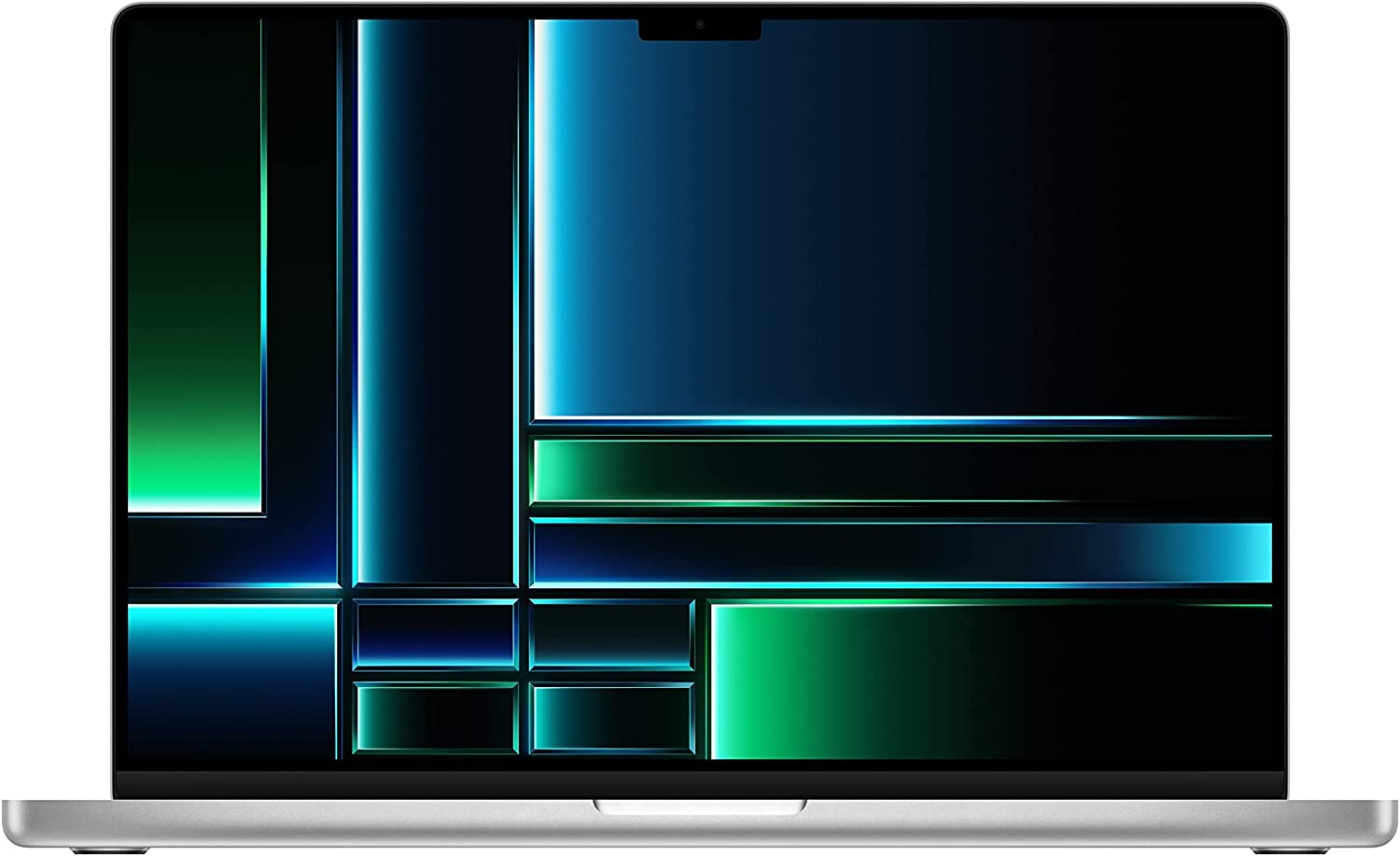
The MacBook Pro 16-inch 2023 with the M2 Max chip is the most powerful Apple laptop yet. Tailor-made for creative pros, it might not be suited for everyday users — especially for such a steep asking price.
Pros
- Gorgeous 16-inch Liquid Retina XDR display
- Spectacular performance
- Epic battery life
- Generous port selection
Cons
- Steep asking price
- Nominal upgrade from 2021 model
The Macbook Pro 14-inch 2023 and MacBook Pro 16-inch 2023 are here. Sporting the new Apple M2 Pro and Apple M2 Max processors, these are without a doubt, the most powerful Apple laptops to date. Each has earned a place in our best laptops and best MacBooks lists.
Now that both MacBook Pros are out in the wild, the natural question to ask is, which Apple laptop should you get? Aside from their respective sizes, both notebooks feature fantastic mini-LED displays, generous port selection and blazing-fast performance. They also have sturdy, squared-off aluminum chassis that give them a premium look. There are more similarities than differences, but those differences could be what help you decide which machine to get.
Should you get the Macbook Pro 14-inch 2023 and MacBook Pro 16-inch 2023? We’ll break down each of the laptops’ features to arrive at an answer.
MacBook Pro 14-inch vs MacBook Pro 16-inch: Specs
| MacBook Pro 14-inch 2023 | MacBook Pro 16-inch 2023 | |
|---|---|---|
| Starting price | $1,999 | $2,499 |
| Screen | 14.2-inch Liquid Retina XDR display (3024x1964 pixels, 254ppi) | 16.2-inch Liquid Retina XDR display (3456 x 2234, 254ppi) |
| Processor | M2 Pro (10-core CPU, 16-core GPU or 12-core CPU, 19-core GPU), with optional M2 Max with up to 12-core CPU and 38-core GPU | M2 Pro (12-core CPU, 19-core GPU) or up to M2 Max (12-core CPU, 38-core GPU) |
| Battery size | 70Wh | 100Wh |
| Battery life (tested) | Up to 14 hours of web surfing over Wi-Fi | 18:56 |
| Storage | 512GB to 8TB | 512GB to 8TB |
| Memory | 16GB to 96GB | 16GB to 96GB |
| Ports | Thunderbolt 4 (x3), HDMI, MagSafe 3, headphone jack, SD memory card slot | Thunderbolt 4 (x3), HDMI, MagSafe 3, headphone jack, SD memory card slot |
| Webcam | 1080p FaceTime HD camera | 1080p FaceTime HD camera |
| Wi-Fi | Wi-Fi 6E | Wi-Fi 6E |
| Bluetooth | Bluetooth 5.3 | Bluetooth 5.3 |
| Dimensions | 12.3 x 8.7 x 0.6 inches | 14.0 x 9.7 x 0.6 inches |
| Weight | 3.5 pounds (M2 Pro) - 3.6 pounds (M2 Max) | 4.7 pounds (M2 Pro) - 4.8 pounds (M2 Max) |
MacBook Pro 14-inch vs MacBook Pro 16-inch: Price
The MacBook Pro 14-inch starts at $1,999. For that price, you get a 10-core M2 Pro CPU, a 16-core GPU, 16GB of unified memory and 512GB of SSD storage.
The next step up is an M2 Pro model with a 12-core CPU, 19-core GPU, 16GB of memory and 1TB of storage for $2,499. Or you can opt for the M2 Max version with the same CPU but a 30-core GPU and 32GB of memory for $3,099.
Note that the M2 Pro model maxes out at 32GB of memory, but you can go all the way up to 96GB if you spring for the M2 Max chip with a 38-core GPU. That's an $800 add-on by itself. You can also go up to 8TB of storage for a cool $1,800.

The MacBook Pro 16-inch has a starting price of $2,499. This configuration comes with a 12-core M2 Pro CPU, a 19-core GPU, 16GB of unified memory and 512GB of SSD storage. For $200 more, you can get 1TB of storage.
Get instant access to breaking news, the hottest reviews, great deals and helpful tips.
You can get the M2 Max version for a bank-breaking $3,499. This model packs a 12-core CPU, 38-core GPU, 32GB of unified memory and 1TB of storage. You can upgrade to an obscene 96GB of unified memory for an additional $800. And if you need as much storage space as possible, you can shell out an extra $1,200 for 8TB of storage.
Our MacBook Pro 14-inch review unit costs an obscene $4,099, but it offers obscene power to match with a 12-core CPU, 38-core GPU, 64GB of memory and 2TB of storage. The MacBook Pro 16-inch we reviewed has a maxed-out M2 Max chip, 96GB of RAM and a 4TB SSD for storage. If you were to purchase the same laptop direct from Apple, it would cost you upwards of $5,300.
The MacBook Pro 14-inch is the more affordable laptop of the two but it still commands a hefty price — especially when you include upgrades.
MacBook Pro 14-inch vs MacBook Pro 16-inch: Design
Both the MacBook Pro 14-inch and MacBook Pro 16-inch look the same as their respective predecessors. Considering how that design is still fetching, retaining the same design isn’t a bad thing. The notebooks have a sturdy, squared-off aluminum chassis that is available in either Silver or Space Gray, both of which look great.
Measuring 12.31 x 8.71 x 0.61 inches and weighing 3.5 pounds (3.6 pounds for the M2 Max version), the MacBook Pro 14-inch is a bit hefty for a 14-inch laptop. For instance, the Huawei Matebook X Pro weighs 2.9 pounds and the HP Spectre x360 14 is 3 pounds, but those systems don't pack as much power.
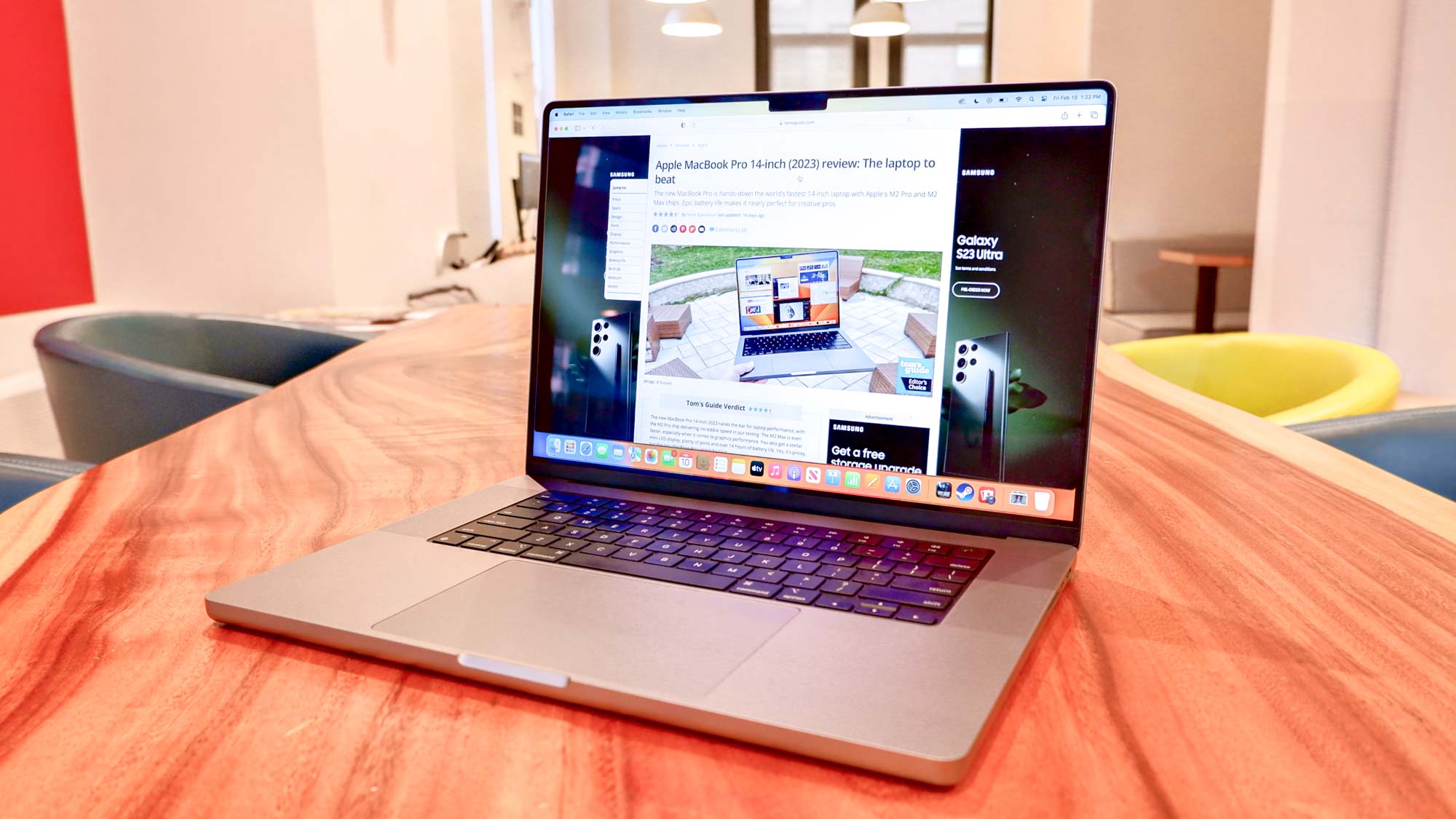
At 14.01 x 9.77 x 0.66 inches and 4.7 pounds (4.8 for the M2 Max model), the MacBook Pro 16-inch is an absolute monster of a laptop. You’re going to be very aware it’s in your backpack when you’re out and about. It’s still portable enough to carry around, but you’re probably going to want to keep it on a desk instead of your lap when you’re working.
The MacBook Pros retain the notch at the top of their displays. This could be a sore spot for some users while others may not mind the notch. The Touch ID button built into the keyboard is one of our favorite features since it allows users to quickly get to work without bothering to type in a pin code. A Face ID sensor would have been appreciated, especially on such pricy notebooks.
MacBook Pro 14-inch vs MacBook Pro 16-inch: Display and audio
The MacBook Pros’ mini-LED displays are easily one of the best you'll find in any laptop. They’re bright, colorful and offer a smooth 120Hz ProMotion refresh rate. But how did the displays stack up in our lab tests?
The MacBook Pros’ panels can get fairly bright. When viewing HDR content, the 16-inch model got as high as 1,476 nits of brightness when using our light meter for 10% of the display and 1,061 nits for 100% of the screen. These values are almost identical to the 14-inch model. As far as average non-HDR brightness is concerned, the 16-inch panel averaged 446.8 nits of brightness, while the 14-inch laptop averaged 453.2 nits.

When we pointed a colorimeter at the MacBook Pro 14-inch, its screen registered 117.7% of the sRGB color gamut and 83.4% of the more demanding DCI-P3 color space (100% is most accurate for both). The 16-inch laptop saw similar results, with 118.2% and 83.7%, respectively.
Color accuracy is solid too, with both MacBook Pros turning in a Delta-E score of 0.2 (0 is perfect).
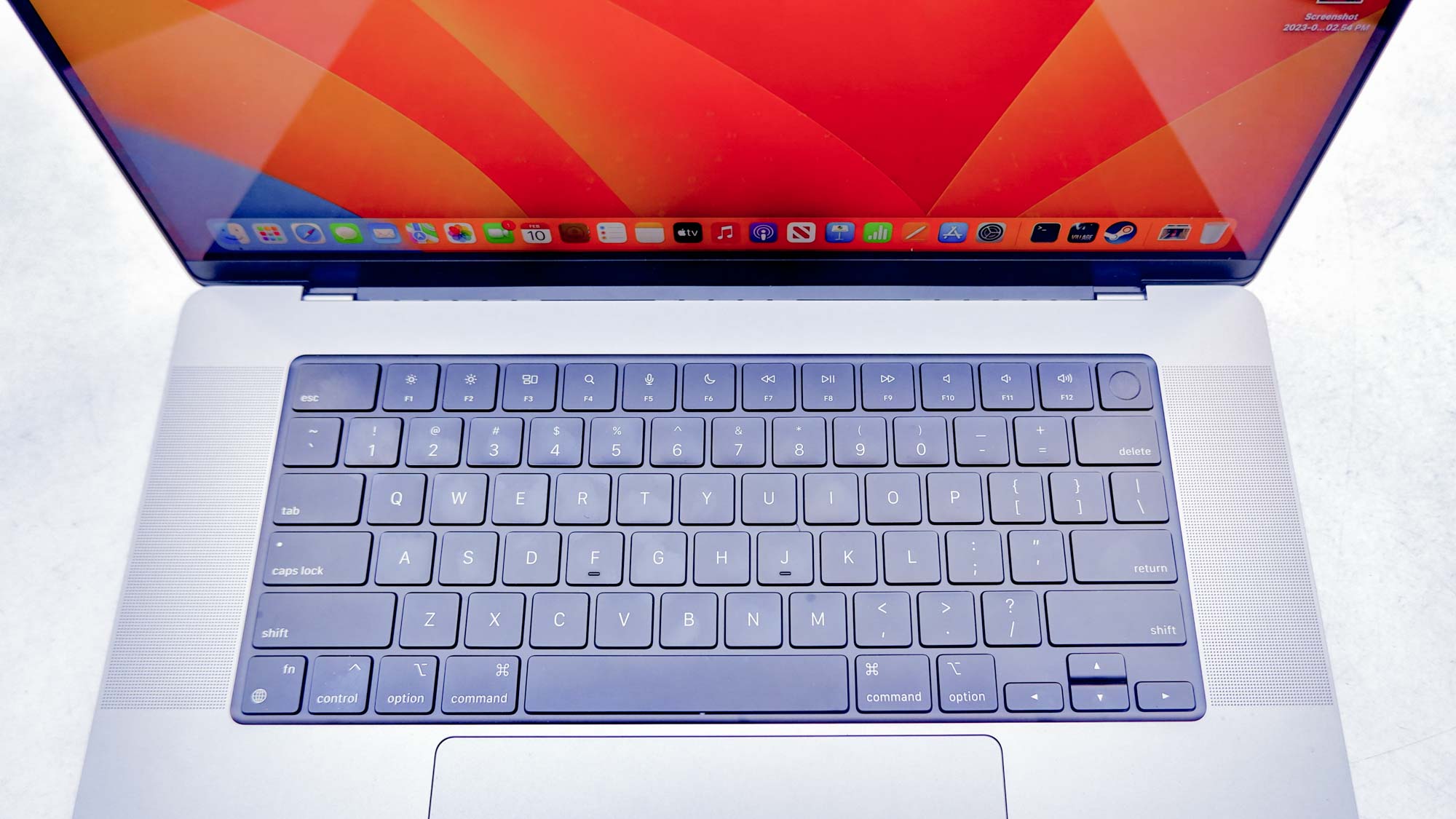
The Mandalorian season 3 trailer sounded thunderous coming through the MacBook Pro 14-inch's six-speaker sound system, which includes four force-canceling woofers and two tweeters. Everything from the Mandalorian's monologue and laser fire to the wind instruments sounded crisp and clear, even at high volume.
Sound is just as impressive as the visuals in The Flash trailer thanks to the 16-inch MacBook Pro's six-speaker sound system. Explosions are thunderous while dialogue comes through crystal clear. Conversation-centric content like the Waveform Podcast also sounds impressive, even at high volumes.
The bottom line is that content looks and sounds amazing on both laptops.
MacBook Pro 14-inch vs MacBook Pro 16-inch: Ports
The new MacBook Pros have the same amount of ports as their respective previous models, which is fine since we were big fans of those laptops’ generous port selection. This includes three Thunderbolt 4/USB-C ports, an SD card slot and an HDMI port.
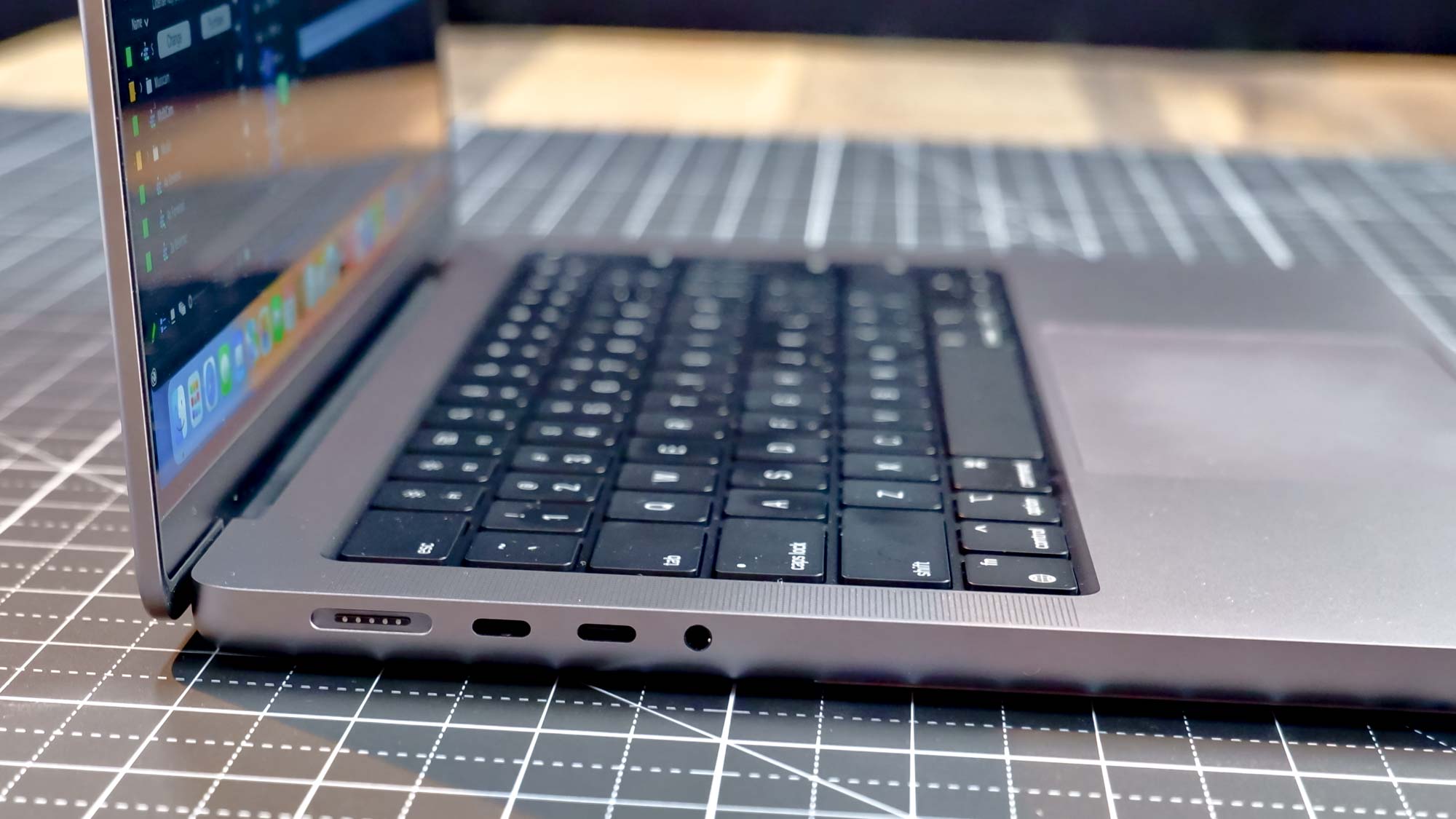
The HDMI port now supports up to 8K resolution on an external display at 60Hz, as the MacBook Pros support the HDMI 2.1 standard. Or you can plug in a 4K display at up to 240Hz. Note that the M2 Pro chip supports up to two external displays overall and the M2 Max chip can drive up to four displays.
MacBook Pro 14-inch vs MacBook Pro 16-inch: Performance
Whether you opt for the M2 Pro or M2 Max versions, the new MacBook Pros can handle anything you throw at them with ease.
Our MacBook Pro 14-inch review unit packs an M2 Pro chip with a 12-core CPU, 38-core GPU, 64GB of memory and 2TB of storage. The MacBook Pro 16-inch we reviewed has a maxed-out M2 Max chip, 96GB of RAM and a 4TB SSD for storage.
Thanks to our sister site Laptop Mag, we also have the test results for the M2 Pro version of this machine, although this is a pricier configuration than the entry-level model. It offers a 12-core CPU, 19-core GPU, 32GB of RAM and 2TB of storage for $3,299.
| Single-core score | Mutli-core score | |
| MacBook Pro 16-inch M2 Max | 1,944 | 15,044 |
| MacBook Pro 14-inch M2 Pro | 1,941 | 14,965 |
| MacBook Pro 14-inch M2 Max | 1,926 | 14,939 |
| Dell XPS 15 | 1,757 | 11,258 |
| HP EliteBook 840 G9 | 1,728 | 10,578 |
| MacBook Pro 14-inch M1 Pro | 1,768 | 12,477 |
| MacBook Pro 13-inch M2 | 1,898 | 8,911 |
On Geekbench 5.4, which measures CPU performance, the MacBook Pro 16-inch 2023 with the M2 Max CPU notched a single-core score of 1,944 and a whopping 15,044 score on the multi-core test. The 14-inch MacBook Pro with an M2 Pro chip scored 1,941 and 14,965 on the single and multi-core tests, respectively.
| Time (min:sec) | |
| MacBook Pro 16-inch M2 Max | 4:03 |
| MacBook Pro 14-inch M2 Pro | 4:03 |
| MacBook Pro 14-inch M2 Max | 4:06 |
| Dell XPS 15 | 5:42 |
| HP EliteBook 840 G9 | 6:58 |
| MacBook Pro 14-inch M1 Pro | 4:51 |
| MacBook Pro 13-inch M2 | 6:51 |
On the Handbrake app, the M2 Max-powered MacBook Pro 16-inch transcoded a 6.5GB 4K video to 1080p in 4 minutes and 3 seconds. This is on par with the new MacBook Pro 14-inch and noticeably faster than the previous 16-inch MacBook Pro we reviewed (4:48). The Dell XPS 15 (5:42) and MacBook Pro 13-inch M2 (6:51) crawl in comparison.
| Score | Time (min:sec) | |
| MacBook Pro 16-inch M2 Max | 1,218 | 3:54 |
| MacBook Pro 14-inch M2 Pro | 988 | 4:20 |
| MacBook Pro 14-inch M2 Max | 1,199 | 3:57 |
| Dell XPS 15 | 962 | 5:42 |
| HP EliteBook 840 G9 | 920 | 5:16 |
| MacBook Pro 14-inch M1 Pro | 806 | 4:54 |
| MacBook Pro 13-inch M2 | 817 | 4:54 |
Over on the PugetBench PhotoShop test, which assigns a score based on how effectively a system uses scripts to apply a series of filters and other adjustments to a number of high-res photographs, the MacBook Pro 16-inch 2023 scored 1,218 with the M2 Max chip. This test also times how long each system takes, and the new laptop took 3:54.
In contrast, the last-gen version of this laptop scored 877 and took 4:44. The MacBook Pro 14-inch with the M2 Pro chip took 4:20 and scored 988. Windows laptops like the Dell XPS 15 (962) and HP EliteBook 840 G9 (929) aren’t far behind with their respective scores but they took longer to complete the tasks — with the XPS 15 requiring 5:42 and EliteBook 5:16.
| Score | |
| MacBook Pro 16-inch M2 Max | 1,159 |
| MacBook Pro 14-inch M2 Pro | 942 |
| MacBook Pro 14-inch M2 Max | 1,009 |
| Dell XPS 15 | 616 |
| HP EliteBook 840 G9 | 378 |
| MacBook Pro 14-inch M1 Pro | Did not run |
| MacBook Pro 13-inch M2 | 552 |
Video editing is one of the chief reasons some folks buy a MacBook Pro and the new M2 Max-driven laptop doesn’t disappoint.
One the PugetBench Premiere Pro test, which involves taking a 4K clip and applying a Lumetri Color effect and adding 12 clips across four tracks in a multi-camera sequence, the MacBook Pro 16-inch achieved a score of 1,159 — which absolutely demolishes the XPS 15 (616) and EliteBook 840 G9 (378). The MacBook Pro 14-inch with M2 Pro scored 942 on the same test.
| Score | |
| MacBook Pro 16-inch M2 Max | 5,717 / 6,664 |
| MacBook Pro 14-inch M2 Pro | 5,293 / 6,168 |
| MacBook Pro 14-inch M2 Max | 5,319 / 6,402 |
| Dell XPS 15 | 4,045 / 4,468 |
| HP EliteBook 840 G9 | 4,784 / 5,207 |
| MacBook Pro 14-inch M1 Pro | 5,321 / 5,377 |
| MacBook Pro 13-inch M2 | 2,794 / 2,953 |
Lastly, we ran the Blackmagic disk test to measure the 16-inch MacBook Pro’s SSD performance. It achieved a 5,717 MBps read speed and 6,664 MBps write speed, which is slightly above the same results seen on the 14-inch MacBook Pro with M2 Pro (5,293 / 6,168). As you can see from the table above, the Windows laptops didn’t come close.
MacBook Pro 14-inch vs MacBook Pro 16-inch: Graphics and gaming
Gaming on Mac has always been a dicey proposition due to the lack of support from many third-party developers (among other things). While Apple’s homegrown processors certainly have the requisite computing power to run graphically-intensive modern games, there are few of those on Apple’s version of Steam, for example. But there’s some hope, thanks to the Metal 3 API and the MetalFX feature. But we’ll get to that in a moment.
Our in-house testing showed solid results. Rise of the Tomb Raider reached 91 fps at 1920 x 1200 resolution and 32 fps at 3456 x 2234 on the MacBook Pro 16-inch. Sid Meier’s Civilization VI ran at nearly 60 fps across all available display resolutions on this laptop.
On the 14-inch MacBook Pro with an M2 Pro chip, Rise of the Tomb Raider hit 48.6 fps at 1920 x 1200 resolution. However, it couldn’t reach a playable 30 fps at the MacBook's native 3024 x 1964 resolution. The M2 Max version with 38-core GPU delivered a much higher 73 fps at 1920 x 1200 pixels and a playable 34 fps at the higher resolution.

When combined with Apple silicon, proper PC-level gaming is possible on macOS Ventura thanks to Metal 3, which is Apple’s new application programming interface (API) for game developers. Metal 3 offers upscaling tools to render impressive graphics without taking a huge hit on performance. In fact, it can substantially improve performance — as it did when we tested Resident Evil Village.
We previously tested the game on a 16-inch MacBook Pro with an M1 Max chip and 64GB of RAM — and were floored by the results. With MetalFX disabled, we saw frame rates in the 70s and low 100s, depending on how much action was happening on screen. With MetalFX enabled, frame rates stayed between 150 and 200… which is completely insane!
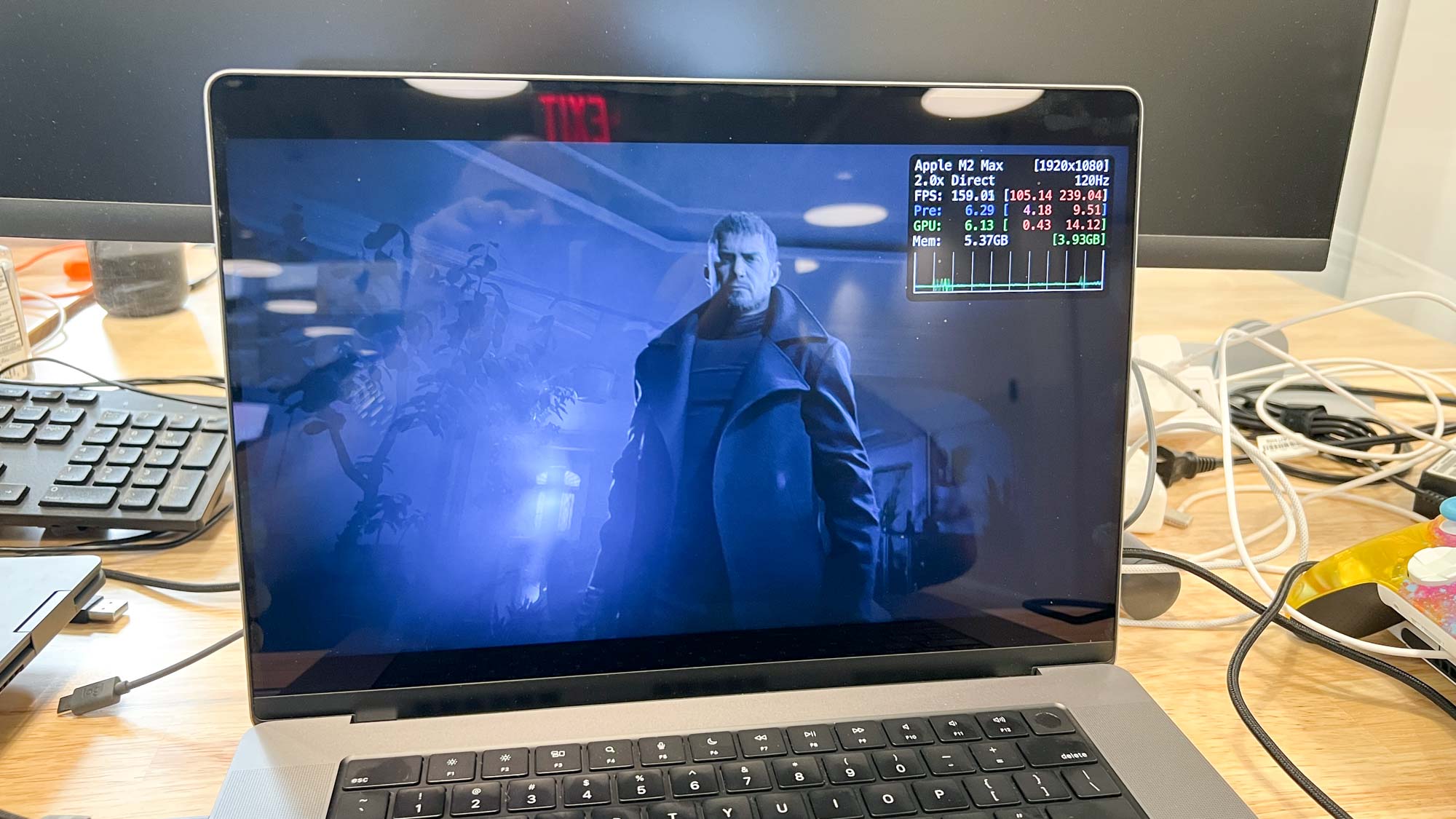
With MetalFX enabled on the MacBook Pro 16-inch with an M2 Max processor, we saw frames on Resident Evil Village ranging from the high 190s all the way to 330 fps. You can argue that you don’t need such high frame rates when playing a single-player title like Resident Evil Village. Regardless, it’s clear that Apple silicon has the power to make games run at insanely high FPS, so long as titles are optimized for Apple’s computers.
In short, if gaming is important to you, a configuration with an M2 Max chip is the way to go — even if Apple’s gaming selection is middling
MacBook Pro 14-inch vs MacBook Pro 16-inch: Webcam and audio
The new MacBook Pros features the same 1080p webcam as the 2021 models, but they do have an improved image signal processor that makes modest improvements to image quality, especially in low light.

We took the two above photos in the same conditions, and the MacBook Pro M2 Max model's shot is on the right. The newer MacBook Pro captures a deeper blue and has a richer red. There's also a bit less noise in the shot.
With that said, it’s the same basic webcam as before. Like other aspects that rolled over from the previous model, we can’t complain about the lack of change since the webcam quality is still impressive.
MacBook Pro 14-inch vs MacBook Pro 16-inch: Battery life and charging
The MacBook Pro 14-inch M2 Pro offers awesome battery life based on our testing. On the Tom's Guide Battery test, which involves continuous web surfing at 150 nits of screen brightness, it lasted an epic 14 hours and 2 minutes. That's just a few minutes shy of the MacBook Pro M1, which lasted 14:08.
The MacBook Pro 16-inch we tested, which packs an M2 Max chip, 96GB of unified memory and 4TB of SSD storage, offers astonishing battery life. In fact, it’s now the longest-lasting laptop we’ve ever tested, making it the best laptop for battery life. It lasted an extraordinary 18 hours and 56 minutes.
| Time (hours:mins) | |
| MacBook Pro 16-inch M2 Max | 18:56 |
| MacBook Pro 14-inch M2 Pro | 14:02 |
| MacBook Pro 14-inch M2 Max | 12:51 |
| Dell XPS 15 | 10:05 |
| MacBook Pro 14-inch M1 Pro | 14:08 |
| MacBook Pro 13-inch M2 | 18:20 |
In contrast, the previous battery life champion was the M2-powered MacBook Pro 13-inch, which clocked in at 18:20 based on our testing. That’s obviously still impressive, but the MacBook Pro 16-inch gets you an extra 36 minutes.
If you need the most battery life possible, the 16-inch MacBook Pro with our review unit’s specs seems to be the way to go.
MacBook Pro 14-inch vs MacBook Pro 16-inch: Bottom line
Both the new MacBook Pro 14-inch and MacBook Pro 16-inch laptops offer exceptional performance for creative pros and average users alike. They're also both equally fetching, with premium build quality and design. Consuming content on either machine is also a pleasure. In truth, it's hard to go wrong with either machine.
With that said, there are certain factors that could make you gravitate toward one device over the other. If you want the thinner, lighter notebook of the two, the MacBook Pro is for you. This is also a smarter choice if you want to save a few hundred dollars.
Conversely, if you don't mind paying more for a larger display, then the 16-inch MacBook Pro is the ideal choice.
As for which processor to get, it comes down to your specific use case. If you only dabble with photo and video editing, then get a MacBook Pro with an M2 Pro chip. Professional creatives who need to tear through projects may want to opt for a configuration with an M2 Max chip and even up to 96GB of RAM. Just keep in mind that these upgrades will cost you a pretty penny.

Tony is a computing writer at Tom’s Guide covering laptops, tablets, Windows, and iOS. During his off-hours, Tony enjoys reading comic books, playing video games, reading speculative fiction novels, and spending too much time on X/Twitter. His non-nerdy pursuits involve attending Hard Rock/Heavy Metal concerts and going to NYC bars with friends and colleagues. His work has appeared in publications such as Laptop Mag, PC Mag, and various independent gaming sites.
